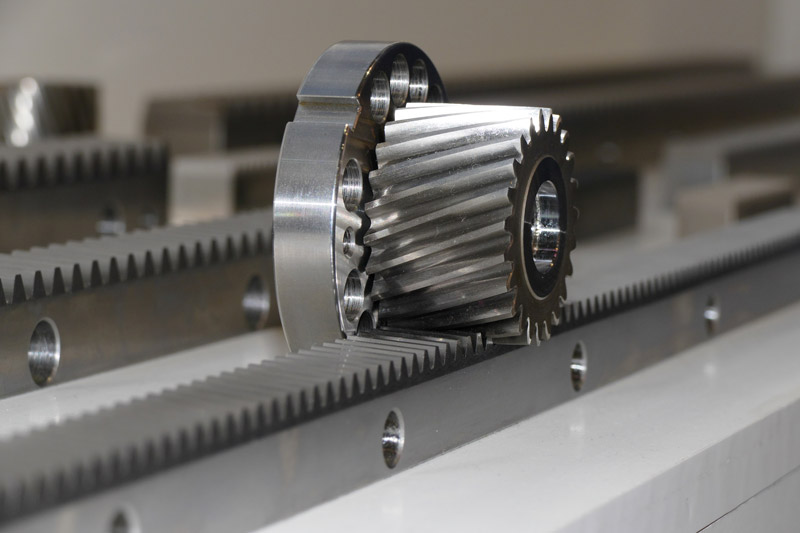Shaping of spur gears with straight and helical teeth and shaping of racks.
Mecal srl owns 3 robotic shaping machines, equipped for shaft handling. The racks, on the other hand, are hobbed with three-axis CNC machines.
These machines have robotic servos which allow deburring and brushing for numerically high productions, in addition to automated loading and unloading.
MECAL HAS HOBBING MACHINES AND FELLOW CUTTERS WITH MANUAL AND ROBOTISED LOADING.
HOBBING MACHINES MAXIMUM VOLUME MODULE 10 DIAMETER 220X800.
FELLOW CUTTER MAXIMUM VOLUME MODULE 5 DIAMETER 400X180MM.
THE RACKS ARE HOBBED WITH THREE-AXIS CNC MACHINES.
Types of gear shaping
There are different types of cutters for ferrous metals, steel, aluminium: there are specific cutters, able to ensure the best possible result, for each material and for each process.
Spur gear shaping can be performed with:
- A hob
- A shaper cutter
- Milling
- Broaching
- Power Skiving
- Rolling
WHAT IS GEAR SHAPING?
The mechanical gear shaping process is carried out by means of machine tools called “shaping machines” The actual machining changes according to the workpiece to be obtained but is generally based on processes called machine shaping. Gears are elements used especially for the mechanical transmission of rotational and translational movements. For this reason they are widespread and are used in different sectors Gears are also subject to a grading system that refers to standard tolerance requirements for sprockets. The most common reference model for gear classification is DIN 3962 which measures and classifies parameters by referring to values ranging from 1 to 12.
WHAT IS GEAR SHAPING USED FOR?
Shaping is a particular process which, through the use of shaping machines, has the aim of creating sprockets with external shaping and grooved profiles. The quality degree of a gear can be defined as the set of tolerances, i.e. all the variations that can be admitted and tolerated with respect to a perfect shaping reference.
HOBBING
This is surely the most widespread system, thanks to its speed and because it allows greater precision which depends both on the quality of the tool and on the working conditions. Hobbing machines have fairly simple kinematics and can be easily integrated into automatic lines. Hobs can be used both when working wet and dry, but in the latter case, as we shall see, they must possess some particular characteristics.
USES OF GEAR SHAPING
Gear shaping has the important task of transmitting power between parallel shafts



